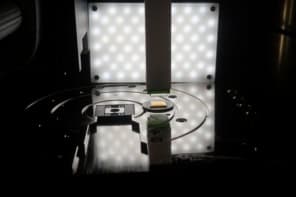Do some constants need fixing? Robert P Crease relays your suggestions, though he finds that concerns over SI units arouse still more passion

In my column in February, I discussed several fundamental constants, such as π and Planck’s constant, h, that, I thought, might not be expressed with maximum beauty and efficiency. I asked readers for other candidates and received dozens of replies. Many of you were particularly concerned about whether it would be better to define π as the ratio of the circumference of a circle to its radius, rather than its diameter.
In February I cited an article from 2001 called “π is wrong!” by University of Utah mathematician Bob Palais that was published in Mathematical Intelligencer (23 3), which identified formulas that would be simpler with such a redefined π. In response to my column, Palais wrote that he started thinking about π and possible simplifications when he noticed, to his bafflement, that his students would reach for their calculators to work out cos(π/2) or sin(π/2), when he had gone to the trouble to devise questions for which they did not have to do so.
But Palais noted that his sense of urgency was not widely shared. He mentioned an entry from August 2007 by the computer scientist Bill Gasarch on the blog Computational Complexity entitled “Is pi defined in the best way?”. It looks at two examples from mathematics. One concerns the expansion of the zeta function ζ(n) = Σr–n, which is a little, but not much, simpler if 2π rather than π is used. The other involves calculating the formulas for the volume and surface area of an n-dimensional sphere, for which it is only a matter of taste whether formulas with 2π are better.
A base affair
Indeed, most respondents seemed less aroused than intrigued that π, and other constants of mathematics and science, could be amended at all. Some proposed different mathematical structures that might be profitably changed, such as bases. Richard Hoptroff, a physicist who works for the software firm HexWax in London, wrote “Don’t you think the use of base 10 has passed its sell-by date? It’s a bit arbitrary now that we don’t need to count on our fingers any more. How about following the computing world’s example and switching to the far simpler 2?” Using base 2, he noted, would eliminate suspicious irrational behaviour such as thinking that 1101 is unlucky, or that 1010011010 is the number of the beast.
And Aasim Azooz of Mosul University in Iraq said he had wondered if the sacred time variable, t, which can only be defined in terms of two successive events, could be replaced with a variable such as entropy — and how such a substitution might change physics. But he confessed he had been too distracted by other events in his country to focus on the issue.
Those who preferred one version of a constant usually admitted it to be based on convenience. As Robert Olley from the University of Reading noted, “Even the difference between the two versions of Planck’s constant h and h depends on whether one is thinking physically in terms of frequency ν or mathematically in terms of angular momentum ω. Physics is not applied mathematics!”
Meanwhile, Igor Zolnerkevic, a former physics graduate student and now a science writer in Brazil, observed that a maximally efficient theory only requires two dimensional constants. He cited a paper by George Matsas from the Universidade Estadual Paulista in Brazil and colleagues, entitled “The number of dimensional fundamental constants” (arXiv:0711.4276), which has implications for what a brutally efficient approach to constants would look like, and suggests that certain constants are more fundamental than others.
But Matthew Thompson of the Naval Research Laboratory in Washington, DC pointed out that we rarely prefer such brutal efficiency, citing cases involving “constant pairs” where science needs only one constant but uses two. He mentioned the Nernst equation in electrochemistry R/F = k/E, where R is the gas constant, k is the Boltzmann constant, E is electric potential and F is the Faraday constant, i.e. the electric charge carried by a mole of electrons. “Why”, asked Thompson, “do you need F and R? We keep them since those formulas are a bit more efficient in real-world terms than their microscopic brethren.”
My colleague at Stony Brook Fred Goldhaber explained to me why convenience in constants fails to stir physicists. “Making the units more efficient may simplify people’s thinking,” he suggests. “It may simplify teaching. But it doesn’t make physics progress. It does not help us achieve a new level of understanding of the world. What physics are we doing today that we could not do with old non-SI units? And with computers to do the calculations, it no longer even matters how stupid the units are. What does matter is that people working on the same project agree on their choice of units, as shown by the Mars Climate Orbiter mission failure!”
The critical point
The subject of changing constants triggered several letters about units, and the issue generated much more passion than mathematical constants. I received half a dozen letters from metrologists, for instance, about the movement to tether the SI base unit, the kilogram, not to an artefact but to constants of nature, such as Planck’s constant or Avogadro’s number. In the words of a 2006 article by Ian Mills from Reading and colleagues (Metrologia 43 227), “In the 21st century, why should a piece of platinum–iridium alloy forged in the 19th century that sits in a vault in Sèvres restrict our knowledge of the values of h and me [the mass of the electron]?”
The passion seemed stimulated by two factors: the prospect of bringing additional precision to the kilogram over the long term; and the sense that an SI unit’s role is more completely fulfilled if it is tied to a true invariant of nature. But other respondents wondered whether such a shift really amounts to an achievement of new knowledge or understanding, or only to reshuffling our conventions. That is a discussion for another time.



